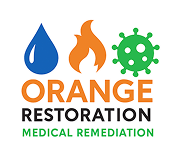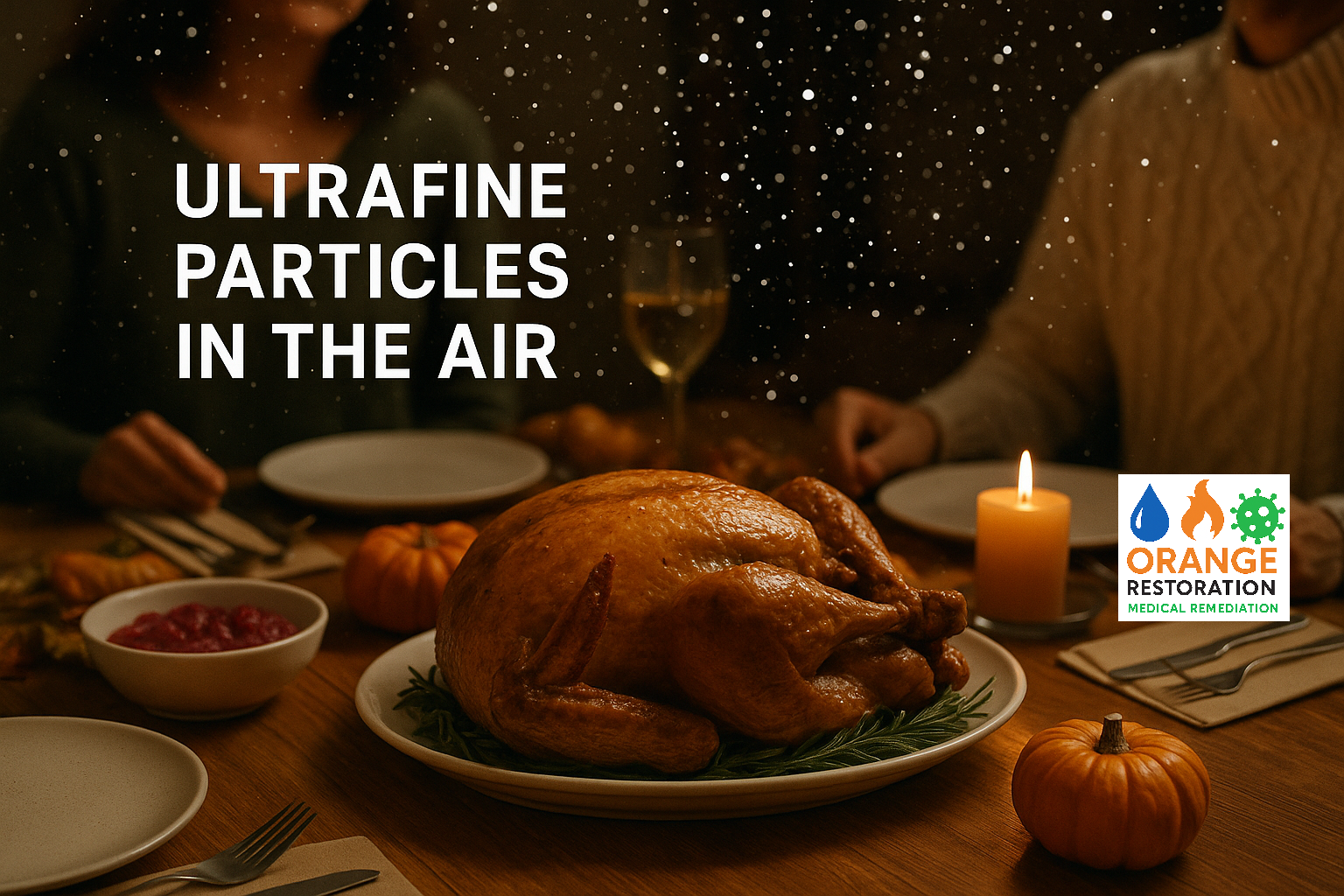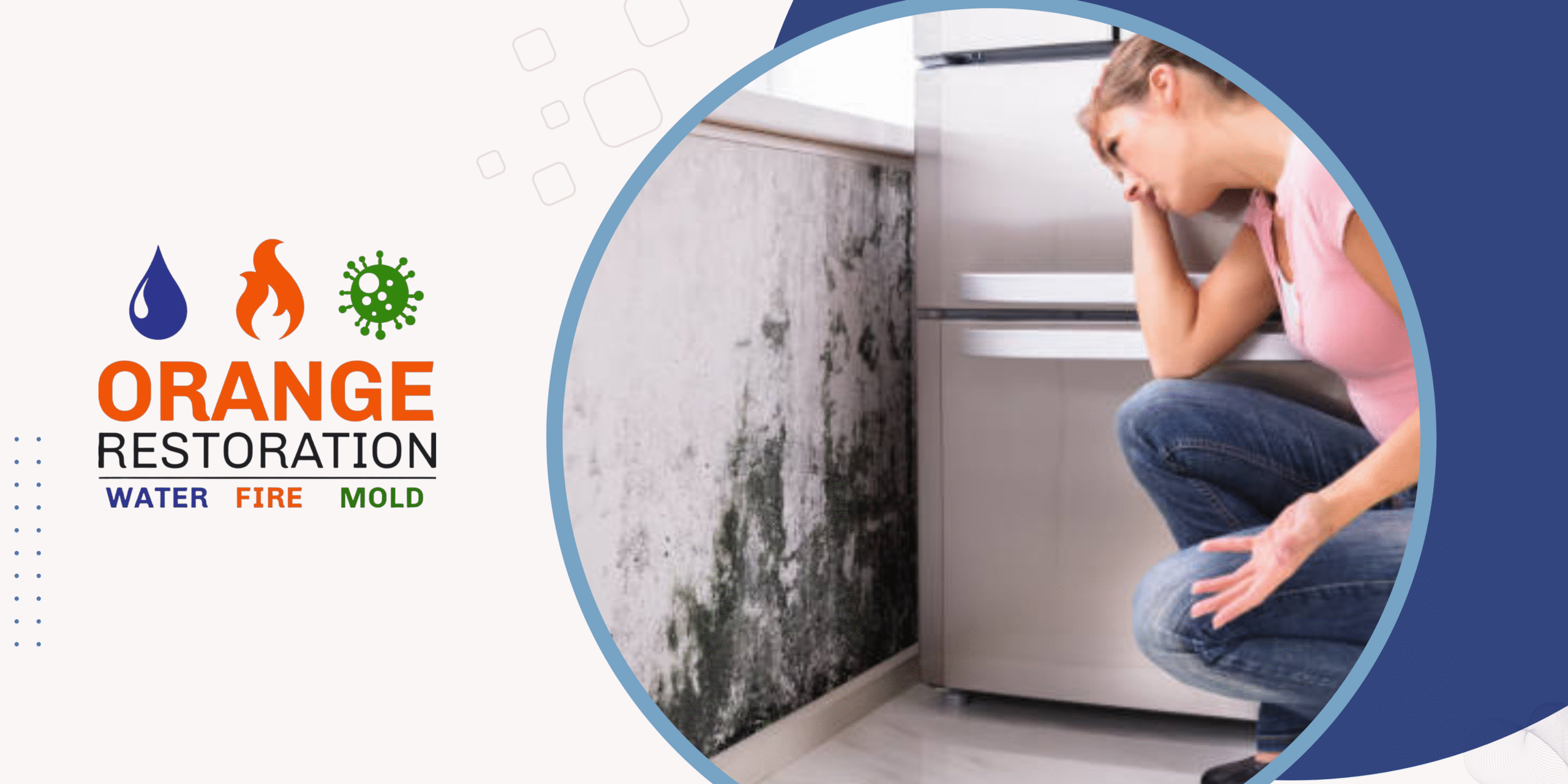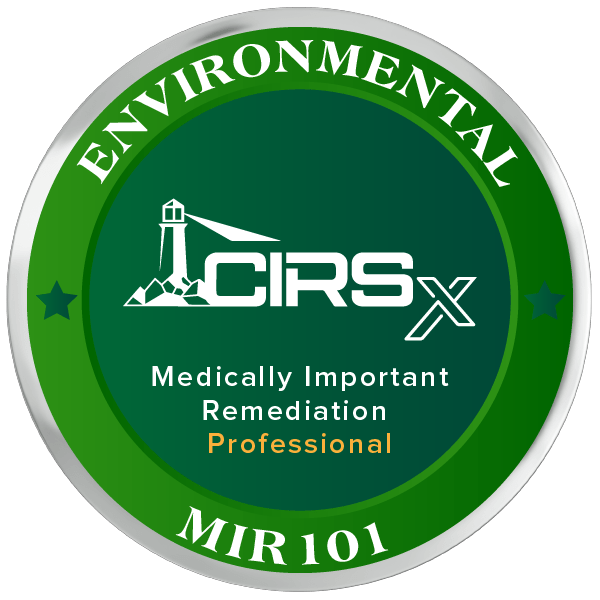CIRS Safe Remediation Services Available
Turning Devastation Into Restoration.

Medically Sound Remediation
Certified in medically sound remediation by CIRSx and trained in the Shoemaker Protocol, our team removes all mold — including fragments and ultrafine particles — while working with medical and environmental professionals. When you need indoor air quality you can trust, we deliver a truly safe, thorough solution.
Water Damage Repair
Are you currently experiencing flooding or water damage in San Diego? If so, you’ll want to give us a call immediately. Waiting to start the cleanup process can cause mold and other problems to arise that can lead to serious health issues.
Fire Damage Repair
We can help with emergency fire and smoke damage restoration, ensuring you recover as many possessions as possible. We are an experienced fire and smoke restoration company and will ensure your property is restored properly.
Mold Damage Repair
Mold in your home or place of business can lead to serious health problems including bronchitis and other respiratory diseases. If you suspect mold in your home, contact our team for a mold inspection or a mold test professional referral. We are also CIRSx Certified for Medically Sound Mold Remediation, Small Particle Cleaning, and Ultrafine Particle Removal.
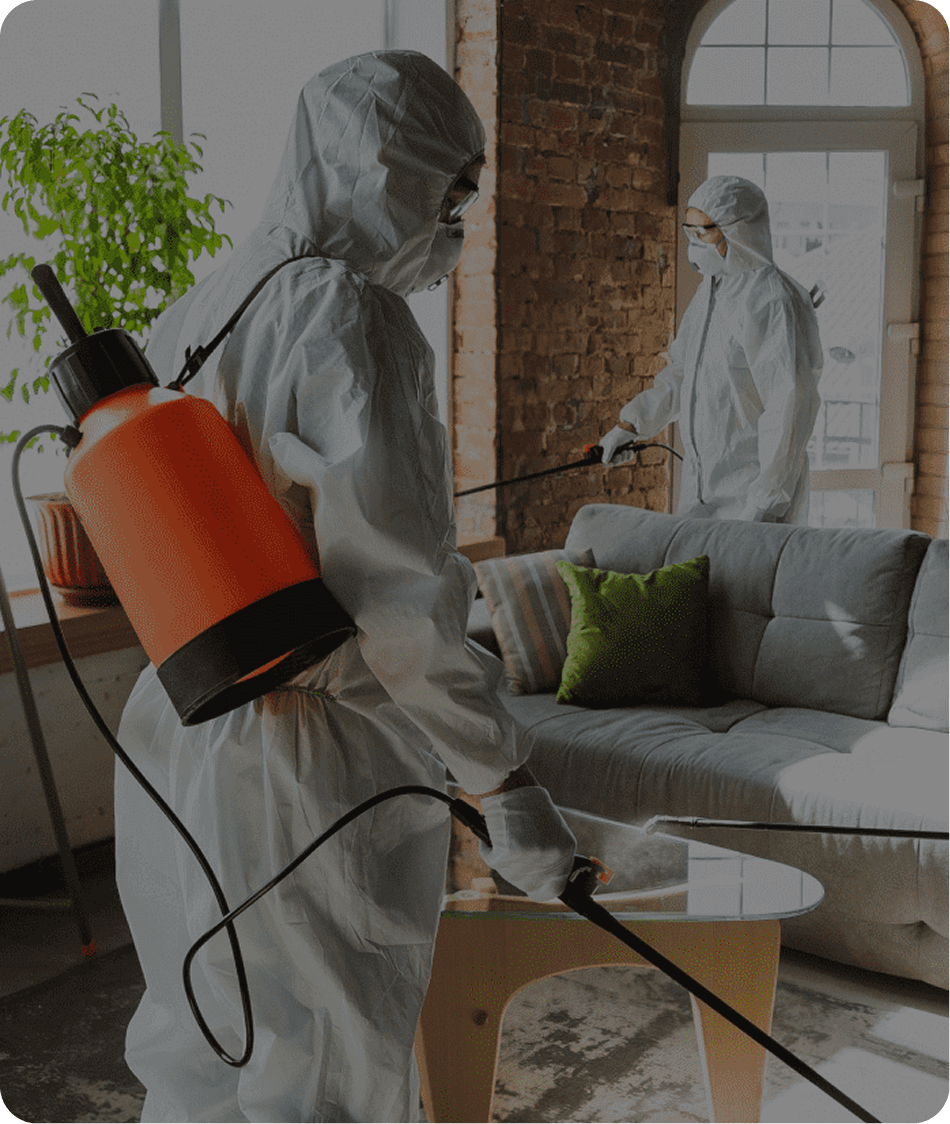
explore our services
Expert Restoration and Damage Repair
“Feel confident that most who call Orange Restoration need our expert level medically sound remediation to fully eradicate their home from the contamination threat to their health. Often those with Chronic Inflammatory Response Syndrome Water Damaged Building (CIRS-WDB) are very much battling a serious health battle, cleaning, and fixing this contamination is not something they are capable of doing.
In fact, 25% of people are genetically susceptible to mold sensitivity that can lead to Chronic Inflammatory Response Syndrome (CIRS).
We still do all the other services for damage restoration including water damage repairs, mold damage remediation, fire damage restoration, flood mitigation emergency services, and now the Medically Sound Remediation, Small Particle Cleaning and Ultrafine Removal services; but now with the increased training of our expert remediation team. If you want the best restoration company in San Diego, Orange Restoration is fully equipped to help you, and with our advanced partners and expert team, we can do it more rapidly than other local restoration companies. Our team is not just expert remediators, we also have a master plumber, a team of electricians, mold remediation experts, and also restoration remodeling experts to rebuild your home back to normal.”
Medically Sound Remediation
Medically Sound Remediation is a more profound protocol for mold and water damage remediation
Fire Damage Repair
We can help with fire and smoke damage restoration, ensuring you recover as many possessions as possible.
Mold Remediation
Mold in your home or business can lead to serious health problems including bronchitis and other respiratory diseases.
Water Damage Restoration
We are here to serve your home to
not only remediate your water damage and flooding issues
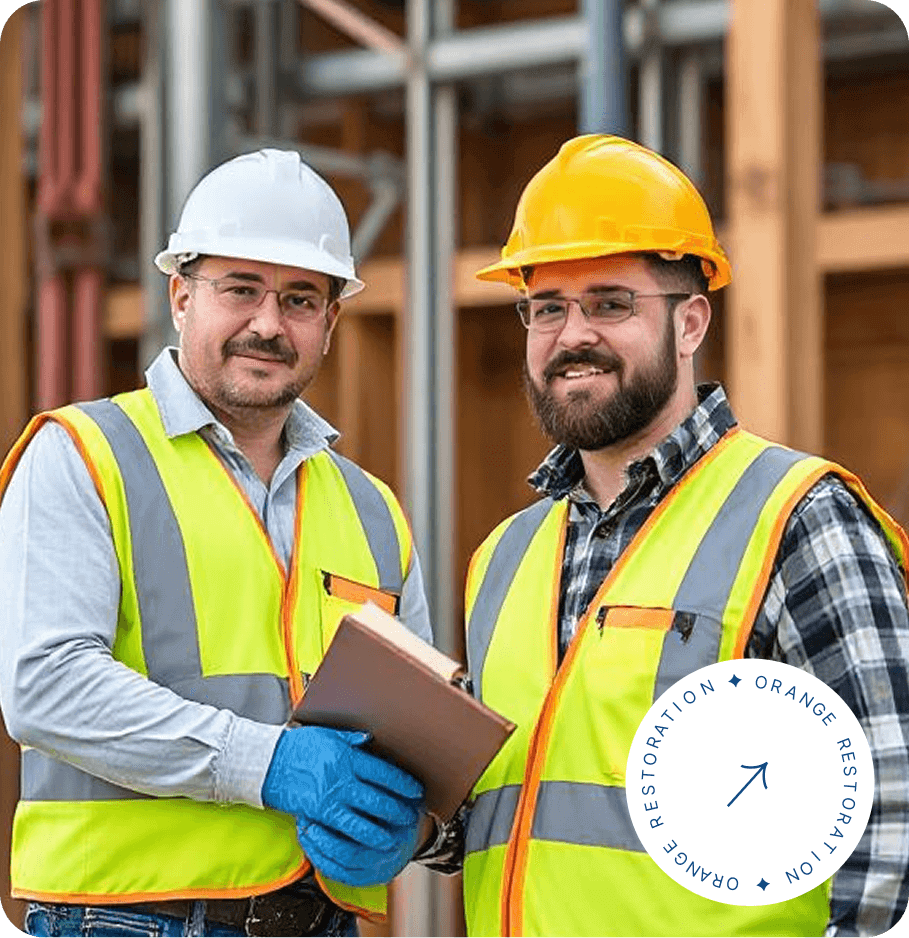
about us
We Specialize in all Damage Restoration Services
We are here to serve your home to not only remediate your water damage and flooding issues, but we can do the full reconstruction to get it back to normal, we can work to remediate the mold and the risks of future development.
Fair and Honest Pricelist
Fully reconstruction services
Renovations and remodeling
Fully certified, licensed & Insured
100% Satisfaction guarantee
Call us 24/7
Our Official Google Reviews
why work with us?
Reason Why People Love
Our Services

24/7
Emergency Services

30
Minutes Response Time

100%
Insurance Approved

BBB
A+ Company

1523+
Projects Completed

24/7
Customer Support

2350+
Satisfied Clients

5.0
Star Rating
about our services
We Can Work With Your Insurance Provider Directly
We Use A Fair And Honest Pricelist. We Work With Low Overheads, Don’t Have A Fancy Office In A Downtown High Rise, And Are Able To Pass On The Savings To Our Customers.
Are You Familiar With Xactimate? It’s A Dynamic Pricelist Dictated By The Insurance Industry, Zip Code Dependent And Updated Quarterly. You Can Trust Us To Handle Your Water Damage, Flooding, Mold Damage, Or Fire Damage, And Get Your Home Or Business Back To Its Original Condition.





articles and blogs
Read Our Featured Blog Posts
Want to learn more about our services, head on to the blog posts and get more information about our services.
Small Particle Behavior in Homes During Thanksgiving
Thanksgiving is supposed to be about food, family, and warmth, not about small particle issues...
Why Does My AC Smell Musty? Mold in AC
The first hot week of the season hits San Diego County, and like clockwork, the air...
Why Most “Water Damage Restoration Near Me” #1 Google Results Can Do More Harm Than Good
Don't call any "water damage restoration near me" Google search result, do research, call one who will do it right the first time!
why work with us?
Here are Most of Frequently Asked Questions
How will I know if I have water damage?
How much are your water damage restoration services?
How long does it take to clean up the water and dry everything?
Does Orange Restoration have any professional credentials?
Orange Restoration has acquired all the necessary licenses and certifications to provide professional water damage restoration services to residents and businesses in San Diego.
Extended Credentials:
Orange Restoration is Institute of Inspection Cleaning and Restoration Certification (IICRC) certified, and fully licensed (lic#892496) and insured. We have an excellent record with the better business bureau and California state license board. In addition to these credentials, we are recently became Medically Sound Remediators with a CIRSx Certifications for our technicians to be able to offer Medically Sound Remediation Services in addition to our traditional remediation scope of work.
Is fixing water damage a complicated process?
There are multiple stages to the water damage repair and restoration process. First, the technician will clean up and remove any water remaining on the flooring and then dry all soaked carpeting and furniture. After that, they will set up one or more dehumidifiers to remove the moisture from the air and prevent mold growth. All the water and moisture must be removed before repairs are made to damaged drywall, wood flooring, ceilings, etc. A professional water damage restoration company has the best tools and equipment to do a thorough restoration. In addition, Orange Restoration can use thermal imaging cameras and moisture meters to assess hidden areas for water and moisture-related damage.
Who do I call first after noticing water damage in my home? My insurance company?
What are the primary reasons for water damage?
What is the Best Fire Restoration company is San Diego County?
ORANGE RESTORATION IS THE #1 SMOKE AND FIRE DAMAGE REPAIR SAN DIEGO
It is essential to undertake each step of the property restoration process with intense keenness and ensure it is done correctly since failure of the procedure or overlooking a simple thing can give rise to additional problems. The fire restoration process is a dangerous endeavor that should not be done by homeowners. It should, however, be handled by someone qualified with enough training in dealing with scenarios such as these. If you need your home restoration to be handled by qualified staff with enough experience in salvaging valuables, then Orange Restoration in San Diego, CA is the perfect place to go. Our company is certified by Clean Trust and is always ready and willing to handle all your fire, smoke, water, and mold restoration requirements. All you need to do is make a phone call to (619) 376-6838 and wait for our technician, and within an hour the technician will be on your doorstep ready to lend assistance.
Can Orange Restoration Assess the Fire Damage of My Home?
Yes! We can do that! Once you have contacted us or any fire restoration company, their first step will be to assess the extent of the fire damage. We will evaluate how far the fire, smoke, soot, and water have spread throughout your property. This assessment will reveal the impact on your ceilings, walls, and furniture.
The assessment process is crucial for us to fully understand the damage and quickly develop a plan of action. Our team will work hard to provide you with an accurate cost estimate and a timeline for the restoration work.
We have a blog article on Urgent Fire Damage Repairs and Medical Concerns written because of our recent training in Medically Sound Remediation. With this recent upgrade in our training, we simply have more value to add. For example, with our fire damage restoration services, we have all the experts needed for full restoration. This includes a master plumber, team of electricians, mold remediation, and an expert reconstruction team. We have these experts on our team because when we do medically sound remediation, we need to be absolutely sure no third part comes in and does something to negatively impact a project’s containment.
Do I really need mold remediation after Water Damage?
After any water damage inside a home or business, it’s essential to assess the extent of water damage and the potential for mold growth. Here are some factors to consider:
- Duration of Moisture Exposure: Mold can begin to grow within 24-48 hours after water damage has begun to go unrecognized. If your home or business has had wet, damp, or leaking water for an extended period, there’s a high likelihood of mold growth.
- Extent of Water Damage: If the water damaged areas were rapidly removed, and affected only a small area, you may be able to clean and dry the area yourself. However, if the water was contaminated or if the water damage was extensive, it’s best to seek professional water damage remediation services and have them evaluate for mold risks, testing when necessary.
- Hidden Mold: Mold often grows in hidden areas, such as behind walls, under flooring, and in air ducts. A professional mold inspection can identify hidden mold and ensure thorough remediation. If you have had extended water damage, you should consider getting a mold testing and air testing.
- Preventive Measures: Even if you don’t see visible mold growth, it’s advisable to have your home inspected for mold after water damage to prevent future problems. Mold growth can be quite devastating for home values and for your health.
While not all water damage scenarios require professional mold remediation, it’s essential to assess the situation carefully and consider the factors mentioned above to determine the best course of action for your home and your family’s health. Taking fast action is best as mold will rapidly begin to spread when moisture is present in your home.
How long does the Shoemaker Protocol take?
Our Medically Sound and Small Particle cleaning service is only part of the healing process. Please look into finding an IEP or a medical doctor to discuss this this protocol in more depth.
Does the Shoemaker Protocol work?
What is the Shoemaker Protocol treatment?
What is a mold remediation protocol?
A mold remediation protocol is a structured plan used to safely remove mold from a building. Traditional mold remediation often involves antimicrobial treatments, encapsulation, or disinfection, whereas medically sound remediation focuses on complete mold removal without the use of antimicrobial agents, ensuring a safer environment for sensitive individuals.
Look into our Medically Sound Remediation & Small Particle Cleaning services if you have sensitivities to mold or have particular health concerns.
What is the difference between Medically Sound Remediation and Traditional Mold Remediation?
Medically sound remediation does not involve disinfecting, killing, or encapsulating mold but instead focuses on completely removing it from building materials. It adheres to higher standards to prevent re-exposure and ensure a safe environment for recovery.
What are the key elements of Medically Sound Remediation Services?
- No use of antimicrobials
- No encapsulation
- No sealing of cavities
- White glove test for thorough cleanliness
- All discoloration must be remediated
- Mandatory decontamination chambers
- Continuous negative air pressure
- Strict PPE protection
- Full 6-mil containment barriers to prevent cross-contamination
The key differences between Medically Sound Remediation and Traditional Remediation lie in the level of detail, the protocols followed, and the ultimate goal of the remediation process. Here’s a breakdown of the main distinctions:
1. Focus on Health vs. Structure
- Medically Sound Remediation prioritizes occupant health, especially for those with conditions like CIRS, mold sensitivity, or other environmental illnesses.
- Traditional Remediation primarily focuses on structural integrity and preventing further damage
2. Cleaning Standard
- Medically Sound Remediation goes beyond visible mold removal, addressing ultrafine particles, biotoxins, and airborne contaminants to create an environment safe for hypersensitive individuals.
- Traditional Remediation typically follows industry-standard guidelines (like the IICRC S520) to remove visible mold and prevent regrowth but may not eliminate the small particles that continue affecting health.
3. Testing and Verification
- Medically Sound Remediation often includes detailed post-remediation verification (PRV) testing, such as:
- ERMI (Environmental Relative Moldiness Index) testing
- HERTSMI-2 (Health Effects Roster of Type-Specific Formers of Mycotoxins and Inflammagens-2)
- ATP testing for biological contaminants
- Airborne and settled dust analysis for small particles
- Traditional Remediation may only include standard air or surface sampling post-remediation, primarily checking for visible mold presence rather than microscopic contaminants.
4. Use of Biocides and Cleaning Agents
- Medically Sound Remediation avoids harsh chemicals, using medical-grade HEPA filtration, mechanical cleaning, and safer products to remove contaminants without introducing additional toxins.
- Traditional Remediation often relies on chemical biocides or fungicides, which may kill mold but can leave behind harmful residues.
5. Cross-Contamination Prevention
Medically Sound Remediation follows strict containment, negative air pressure, and decontamination protocols to prevent cross-contamination of fine particles throughout the home.
Traditional Remediation typically uses containment but may not account for the smallest particulate spread.
Is PRV Testing Only in Medically Sound Remediation?
PRV (Post-Remediation Verification) testing is not exclusive to medically sound remediation, but the type of PRV testing differs.
Traditional Remediation PRV: Oftenn includes visual inspections and standard air or surface mold testing.
Medically Sound PRV: Incorporates more advanced testing like ERMI, HERTSMI-2, & particle counts to ensure the environment is truly safe for sensitive individuals.
What do Indoor Environmental Professionals (IEPs) do?
What is an Indoor Environmental Professional (IEP)?
How do you perform small particle cleaning?
Small particle cleaning is a critical step in mold illness recovery. It involves HEPA vacuuming and a wet-wipe/dry-wipe sequence to remove fine particulates from all surfaces.
How do you clean items exposed to mold?
What is fine particle cleaning?
Fine particle cleaning refers to the process of removing ultrafine mold and dust particles, typically ranging from 2-20 microns, from surfaces to prevent contamination. We offer Small Particle Cleaning services to help with removal of these ultrafine particles.
How do you get rid of small dust particles?
The best method for removing fine dust particles is a combination of HEPA vacuuming, thorough surface wiping, and maintaining proper air filtration. if you need help, we offer Small Particle Cleaning services.
How to tell if your house is toxic?
Home Testing for mold or any DIY testing for mold is not recommended.
What are the signs of Mold Sickness?
What are the Symptoms of Mold Sickness?
What is Mold Sickness Treatment?
Mold sickness treatment typically involves removing exposure sources, detoxifying the body, and following medical protocols such as the Shoemaker Protocol. Look at a recent blog post about Mold Sickness Treatment we recently published.
What is CIRS-Safe Remediation?
CIRS-safe remediation follows the same principles as medically sound remediation, ensuring that no antimicrobials, sealants, or chemical treatments are used while focusing on complete removal of mold contaminants.
How to clean your Belongings after Mold Remediation for CIRS?
How long should you stay out of the House after Mold Remediation?
How likely is Mold to come back after Remediation?
What do professionals use for Mold Remediation?
Traditional mold remediation professionals use commonly accepted methods, while medically sound environmental professionals adhere to significantly higher standards to ensure safety for sensitive individuals.
Medically Sound Mold Remediation standards:
- No use of antimicrobials
- No encapsulation
- No sealing of cavities
- White glove test for thorough cleanliness
- All discoloration must be remediated
- Mandatory decontamination chambers
- Continuous negative air pressure
- Strict PPE protection
- Full 6-mil containment barriers to prevent cross-contamination
What is the most Problematic Environmental Issue for Homeowners?
While this may not always compromise structural integrity, it can severely impact indoor air quality and pose serious health risks, particularly for hypersensitive individuals.
The EPA has reported extensively on mold sensitivities and the health impacts of water-damaged buildings, yet standard remediation practices often fall short in addressing the needs of those with severe sensitivities.
What does Small Particle Cleaning mean?
Small particle cleaning (SPC) is a specialized cleaning method designed to remove ultra-fine contaminants from indoor environments, including mold fragments, mycotoxins, and dust particles that are invisible to the eye but harmful to sensitive individuals. Unlike standard cleaning, which targets visible dirt, small particle cleaning focuses on microscopic particles that can remain in a home even after traditional remediation.
Small particle cleaning is a specialized process designed to remove microscopic contaminants, such as mold spores, Volatile Organic Compounds (VOCs), fragments, and ultrafine particles (UFPs), particles that traditional cleaning and even professional traditional remediation leave behind. These particles can settle on surfaces and remain airborne, posing health risks, especially for those with mold sensitivities or conditions like Chronic Inflammatory Response Syndrome (CIRS).
This method is especially important for those with chronic inflammatory conditions like CIRS, asthma, or chemical sensitivities. It involves the use of HEPA vacuums, non-toxic wiping techniques, and strict cross-contamination protocols to ensure that particles are physically removed rather than stirred up or left behind.
In medically sound remediation, small particle cleaning is not optional, it’s a critical step toward restoring a truly safe indoor environment
The goal of Small Particle Cleaning is to create or most often restore an environment that is safe for medically sensitive individuals by reducing particle load to the lowest possible level. Small particle cleaning requires testing to prove medically sound conditions.
- Pro Tip: Always ask if your remediation company includes third-party PRV testing.
- Pro Tip 2: Check for certification and proper training in medically sound protocols. Make sure the team understands cross-contamination prevention and can handle all in-house trades to avoid introducing new risks from outside vendors.
How is medically sound mold remediation different from standard mold removal?
Pro Tip: Standard remediation isn’t enough for medically sensitive individuals. Even after traditional cleanup, ultrafine particles, dead spores, and mold fragments often remain. These microscopic contaminants can still trigger severe reactions in those who are immune-compromised or mold-sensitive. For true health and safety, insist on medically sound remediation that includes Small Particle Cleaning and post-remediation verification (PRV) testing.
Why does Mold come back after Remediation?
Mold often returns when the underlying cause, such as hidden leaks, excess humidity, or poor ventilation, is not fully resolved. If moisture remains in walls, flooring, or crawl spaces, mold spores can easily regrow. Another common reason is incomplete remediation, where contaminated materials are left behind or drying protocols were inadequate to prevent mold growth.
Secondary mold growth can also happen when contractors without proper training attempt DIY or “budget” mold removal. These shortcuts often ignore cross-contamination, leaving fine particles and dead spores that still trigger health reactions and can reseed mold growth.
- See Secondary Mold to learn more.
- Why not to call “Restorations Companies Nearby” as proximity does not help with training or certification.
To prevent mold from coming back, medically sound remediation goes beyond surface cleaning. It includes moisture mapping, containment, small particle cleaning, and third-party post-remediation verification (PRV) testing to ensure the environment is truly safe.
Occurs when mold remediation was not done properly. Either by well meaning DIY intentions, poorly trained hired maintenance personnel, or various other tradesmen not properly trained in mold remediation protocols, the result is deeper returning mold. When mold is not done right, especially in the drying protocols, mold can return and be a bigger and deeper problem.
Pro Tip: Research the credentials of any remediation company, ask if they can fully restore your home after remediation, ask if they have ever encountered secondary mold problems, and always check their reviews to see if they are consistent with what a homeowner would say, or are they saying “Will return again!” or even “Great speedy services, hot to order!” as many remediation companies are getting fake reviews as AI is allowing reviews to be prioritized by quantity and not quality feedback from reviewers.
What are the Symptoms of Mold Exposure in a Home?
Common symptoms of mold exposure include:
- Persistent sinus congestion or allergy-like symptoms
- Fatigue or exhaustion that worsens indoors
- headaches or brain fog
- Skin rashes or irritation
- Shortness of breath or wheezing
- Eye irritation or watery eyes
- Sleep disturbances or night sweats
If symptoms improve when you leave your home, mold or water damage could be contributing to your health issues.
Mold & Health blog resources:
- Identifying Mold Causes is Critical for Health
- Mold Growth Imposes Serious Health Effects
- Mold and the The Effect It Can Have On Your Health
- 4 Signs Mold is Affecting Your Health
- Learning About CIRS, Your Health & Home
PRO TIP: Often, the first signs of mold aren’t what you see, but how you feel. Many people notice symptoms that worsen at work or home and improve when they leave, such as unexplained fatigue, headaches, sinus issues, or even mood changes. These reactions can be the body’s way of signaling a hidden mold problem, especially if you’ve had recent water damage or high humidity.
Pro Tip follow up: Why?: Because mold needs only moisture, organic material, and a little time to thrive, it can spread behind walls, in closets, or under flooring without obvious visual clues. If you suspect your health symptoms are linked to your environment, it’s important to investigate before the problem grows worse. Often, people who just had remediation call us with horror stories of Secondary Mold.
Can mold cause Chronic Illness or conditions like CIRS?
Yes, mold exposure can contribute to chronic illness, including conditions like Chronic Inflammatory Response Syndrome (CIRS). CIRS occurs when the immune system cannot properly clear biotoxins from mold or water-damaged buildings, leading to inflammation and multi-system symptoms.
Individuals with genetic predispositions are particularly vulnerable. If you have ongoing symptoms like fatigue, brain fog, sinus issues, or worsening health when at home, environmental mold could be a factor.
Many individuals diagnosed with Chronic Fatigue Syndrome (CFS) may actually be suffering from environmental factors such as mold exposure, which often go undetected. One major reason? Identifying the root cause can be costly and complex, and most conventional medical systems aren’t designed to investigate environmental triggers.
Doctors, trained as generalists, often focus on symptom management rather than environmental assessments. However, a growing number of forward-thinking medical professionals recognize we’re on the brink of a medical shift toward integrating environmental health into individualized diagnosis and treatment, a critical evolution for addressing conditions like CFS, CIRS, and other chronic illnesses.
Learn more about CIRS and home health in our blogs!
How do I know if my Home needs Small Particle Cleaning after Mold Remediation?
Standard or traditional remediation can leave behind microscopic mold fragments and toxins that are invisible but still harmful. Post Remediation Verification (PRV) testing or a consultation with a CIRS-aware remediator can help determine if this extra level of cleaning is needed.
Pro Tip: Look into secondary mold, this is not a common term, but recently here in San Diego, we have seen most of our work recently coming from this problem. Only solution is to make sure you only hire qualified professionals working on remediation. Furthermore, when you consider DIY mold remediation, think of secondary mold risks, drying is just as important as the cleaning portion of the work.
Can I Clean Mold Myself if I have Health Issues?
If you have mold sensitivity or chronic illness, DIY mold cleanup is not recommended. Disturbing mold without proper containment and filtration can release spores and toxins into the air, increasing exposure. Instead, work with professionals trained in medically sound remediation to ensure your environment is safe.
Many cases of secondary mold start with DIY attempts or inexperienced contractors skipping critical steps. Even well-intentioned efforts can create bigger problems. The best safeguard is to invest in a professional assessment, proper mold testing, and a detailed scope of work from a qualified inspector before remediation begins.
Mold doesn’t just damage your walls or cause a musty smell. Mold impacts our health and can even make our bodies a host to mold spores and VOCs. –The Medically Sound Remediators
Pro Tips for Medically Sound Mold Remediation
At Orange Restoration, we know that medically sensitive clients require more than basic mold cleanup. If you’re concerned about mold’s impact on your health, these are the three non-negotiables for true safety:
Pro Tip #1: Never Skip the Drying Phase
Even the best cleaning fails if hidden moisture remains. Professional moisture mapping and thermal imaging confirm materials are truly dry before walls are closed or repairs completed.
Pro Tip #2: Containment Is Non-Negotiable
Improper containment spreads mold spores and toxins throughout your home. Ensure your contractor uses negative air machines, HEPA filtration, and strict cross-contamination protocols every time.
Pro Tip #3: Testing Verifies, It Doesn’t Assume
Every medically sound remediation project should end with third-party post-remediation verification (PRV) testing. Skipping this leaves you guessing whether ultrafine particles, spores, or toxins are still present.
For those with CIRS, mold sensitivities, or chronic conditions, these steps aren’t optional–they’re essential. Our team follows CIRSx-certified protocols to ensure your environment is safe, clean, and truly healthy.
What Happens if Mold is Left Untreated in a Home?
Leaving mold untreated can cause structural damage to your property and increase health risks for occupants. Mold can spread to walls, flooring, and HVAC systems, making remediation more complex and expensive later. For sensitive individuals, prolonged exposure can worsen conditions like CIRS, allergies, and respiratory issues.
Why Mold Must Be Addressed Immediately
Leaving mold untreated doesn’t just threaten your property, it can seriously impact health and safety. Mold often spreads beyond visible surfaces, infiltrating walls, flooring, insulation, and even HVAC systems. The longer it remains, the more extensive and costly the remediation becomes.
For sensitive individuals, prolonged exposure can worsen chronic conditions such as CIRS (Chronic Inflammatory Response Syndrome), allergies, and respiratory disorders. Mold contamination is not just a nuisance, it’s an environmental health hazard.
Health Risks of Mold Exposure
Respiratory Impact:
Mold spores and fragments can act as potent irritants, triggering or worsening asthma, chronic cough, wheezing, and shortness of breath. Those with compromised immune systems or pre-existing lung conditions face even greater risk.
Allergic Responses:
Common reactions to mold include persistent sneezing, nasal congestion, itchy or watery eyes, and skin irritation. These symptoms often intensify indoors, especially in poorly ventilated spaces.Chronic and Systemic Effects:
Long-term or repeated exposure to mold and its byproducts, such as mycotoxins and ultrafine particles, can lead to more serious health issues. These include chronic inflammation, neurological symptoms like brain fog, and immune dysregulation. In severe cases, mycotoxin exposure has been linked to organ damage and other debilitating health conditions.
Do all Mold Remediation Companies follow Medically Sound Protocols?
Does Orange Restoration handle Emergency Water Damage and Medically Sound Mold Remediation?
Yes, Orange Restoration provides both emergency water damage services and also more complex, medically sound mold remediation. We specialize in health-conscious cleanup, including small particle cleaning and CIRS-safe protocols, while also offering full rebuild and restoration services, all under one company roof. We do this because medically sensitive people need all services from trained professionals at the top tier of their training. We in-house all these experts from San Diego County.
We offer many other services such as Fire Damage Repairs, Flood Remediation, and disaster repairs, but Medically Sound Mold Remediation.
Do you offer CIRS-Safe Mold Remediation in San Diego?
What Certifications do Your Mold Remediators have?
Our team is certified in Medically Important Remediation through CIRSx and trained to follow the Shoemaker Protocol for health-based cleaning. We also meet industry standards for water damage restoration, structural drying, and IAQ management.
Orange Restoration holds advanced certifications and training to meet the highest industry and health-focused standards:
- CIRSx Medically Important Remediation Certification – Specialized training for health-conscious remediation, focusing on environments impacted by mold and water damage for medically sensitive individuals.
- Shoemaker Protocol Training – Our team follows scientifically validated protocols for mold-related illness, ensuring remediation aligns with health recovery needs.
- IICRC-Certified Expertise – Including Water Damage Restoration Technician (WRT) and Applied Structural Drying (ASD), ensuring proper moisture control, thorough drying, and structural integrity.
- Advanced Indoor Air Quality Practices – Expert-level training in methods to reduce airborne contaminants, manage ultrafine particles, and create safer indoor environments.
These credentials and specialized skills allow us to deliver medically sound remediation, comprehensive water damage restoration, and air quality solutions while maintaining the highest standards of safety and professionalism.
